I work with languages where I can assign intermediate outputs to a variable and then work the with variables to create a final output. I know SQL doesn't work this way as much. Currently I have queries that require me to make subsets of tables and then I want to join those subsets together. I can mimic the variable assignment I do in my native languages using a VIEW but I want to know how to do this using a single query (otherwise the database will get messy with views quickly).
Below is a MWE to make 2 initial tables DeleteMe1 and DeleteMe2 (at the end). Then I'd use these two views to get current snapshots of each table. Last I'd use LEFT JOIN with the views to merge the 2 data sets.
- Is there a way to see the code SQL uses on the
Join Snapshoted Viewsheader code I supply below - How could I eliminate the views intermediate step and combine into a single SQL query?
Create views for current snapshot:
CREATE VIEW [dbo].[CurrentSnapshotDeleteMe1]
AS
SELECT DISTINCT *
FROM
(SELECT
t.[Id]
,t.[OppId]
,t.[LastModifiedDate]
,t.[Stage]
FROM
[dbo].DeleteMe1 as t
INNER JOIN
(SELECT
[OppId], MAX([LastModifiedDate]) AS MaxLastModifiedDate
FROM
[dbo].DeleteMe1
WHERE
LastModifiedDate <= GETDATE()
GROUP BY
[OppId]) AS referenceGroup ON t.[OppId] = referenceGroup.[OppId]
AND t.[LastModifiedDate] = referenceGroup.[MaxLastModifiedDate]) as BigGroup
GO
CREATE VIEW [dbo].[CurrentSnapshotDeleteMe2]
AS
SELECT DISTINCT *
FROM
(SELECT
t.[Id]
,t.[OppId]
,t.[LastModifiedDate]
,t.[State]
FROM
[dbo].DeleteMe2 AS t
INNER JOIN (
SELECT [OppId], MAX([LastModifiedDate]) AS MaxLastModifiedDate
FROM [dbo].DeleteMe2
WHERE LastModifiedDate <= GETDATE()
GROUP BY [OppId]
) as referenceGroup
ON t.[OppId] = referenceGroup.[OppId] AND t.[LastModifiedDate] = referenceGroup.[MaxLastModifiedDate]
) as BigGroup
GO
Join snapshoted views:
SELECT
dm1.[Id] as IdDM1
,dm1.[OppId]
,dm1.[LastModifiedDate] as LastModifiedDateDM1
,dm1.[Stage]
,dm2.[Id] as IdDM2
,dm2.[LastModifiedDate] as LastModifiedDateDM2
,dm2.[State]
FROM [dbo].[CurrentSnapshotDeleteMe1] as dm1
LEFT JOIN [dbo].[CurrentSnapshotDeleteMe2] as dm2 ON dm1.OppId = dm2.OppId
Create original tables:
CREATE TABLE DeleteMe1
(
[Id] INT,
[OppId] INT,
[LastModifiedDate] DATE,
[Stage] VARCHAR(250),
)
INSERT INTO DeleteMe1
VALUES ('1', '1', '2019-04-01', 'A'),
('2', '1', '2019-05-01', 'E'),
('3', '1', '2019-06-01', 'B'),
('4', '2', '2019-07-01', 'A'),
('5', '2', '2019-08-01', 'B'),
('6', '3', '2019-09-01', 'C'),
('7', '4', '2019-10-01', 'B'),
('8', '4', '2019-11-01', 'C')
CREATE TABLE DeleteMe2
(
[Id] INT,
[OppId] INT,
[LastModifiedDate] DATE,
[State] VARCHAR(250),
)
INSERT INTO DeleteMe2
VALUES (' 1', '1', '2018-07-01', 'California'),
(' 2', '1', '2017-11-01', 'Delaware'),
(' 3', '4', '2017-12-01', 'California'),
(' 4', '2', '2018-01-01', 'Alaska'),
(' 5', '4', '2018-02-01', 'Delaware'),
(' 6', '2', '2018-09-01', 'Delaware'),
(' 7', '3', '2018-04-01', 'Alaska'),
(' 8', '1', '2018-05-01', 'Hawaii'),
(' 9', '4', '2018-06-01', 'California'),
('10', '1', '2018-07-01', 'Connecticut'),
('11', '2', '2018-08-01', 'Delaware'),
('12', '2', '2018-09-01', 'California')
